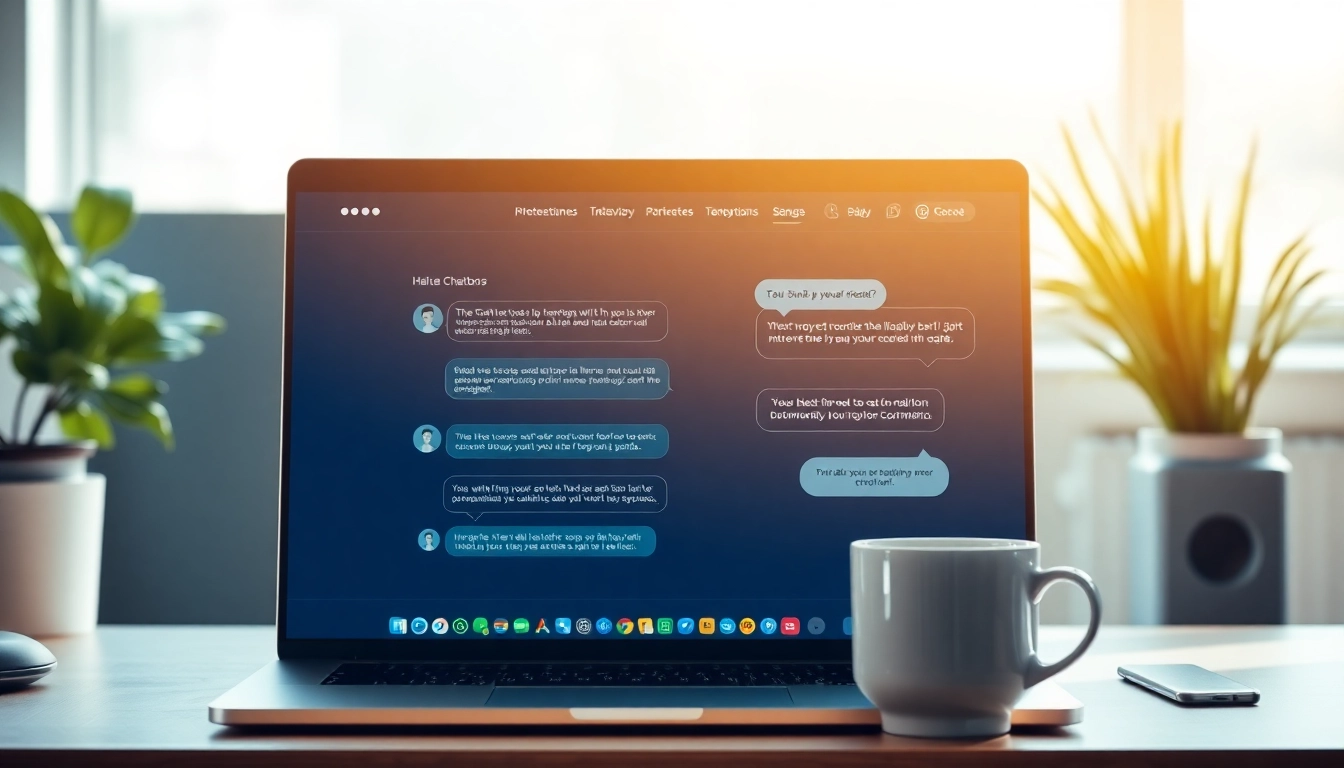Understanding Chatbots for Websites
In today’s fast-paced digital landscape, businesses are constantly looking for innovative ways to engage customers and streamline processes. This is where chatbots come into play. A chatbot for website is an advanced tool designed to assist businesses in enhancing customer interaction, providing immediate support, and ensuring a seamless user experience. But what exactly is a chatbot, and how can it transform the way businesses communicate with their audience?
What is a Chatbot?
A chatbot is an artificial intelligence (AI) software that can simulate a conversation with users via chat interfaces. By utilizing machine learning and natural language processing, chatbots are capable of understanding user queries and providing relevant responses, often in real-time. They can be deployed across multiple platforms, including websites, messaging apps, and social media channels, making them versatile tools for businesses aiming to provide exceptional customer service.
Types of Chatbots for Websites
Chatbots can be generally categorized into two types: rule-based chatbots and AI-driven chatbots.
- Rule-based chatbots: These bots operate based on predefined scripts and rules. They can recognize specific keywords and provide set responses if the queries fit within their limited programming. Rule-based chatbots are typically used for straightforward tasks, such as answering FAQs or providing limited information.
- AI-driven chatbots: Powered by machine learning and NLP, AI-driven chatbots can understand nuanced queries and interact in a more human-like manner. They continuously learn from each interaction, improving over time and providing a more personalized experience for users.
Benefits of Using a Chatbot
The implementation of chatbots on websites comes with a myriad of benefits that can significantly enhance business operations.
- 24/7 Availability: Unlike human agents, chatbots are always available, providing immediate support to users regardless of the time zone.
- Cost Efficiency: By automating routine inquiries, chatbots can reduce the need for extensive customer support teams, leading to decreased operational costs.
- Improved Customer Engagement: Chatbots can initiate conversations with users, guiding them through sales funnels or helping them find relevant information quickly.
- Data Collection: They can gather valuable customer insights through interactions, allowing businesses to understand user preferences and improve offerings accordingly.
How to Choose the Right Chatbot for Your Website
Choosing the right chatbot for your website requires careful consideration of various factors related to your business’s specific needs and goals. Here’s how you can make an informed decision.
Assessing Your Business Needs
Start by evaluating your business objectives. Do you need a chatbot for customer support, sales, or lead generation? Understanding your specific requirements will help you identify the features you need in a chatbot. For instance, if your primary goal is to provide customer support, you may need a chatbot with robust NLP capabilities and multi-channel support.
Evaluating Different Features
Once you have defined your needs, assess various chatbot platforms based on their features. Some important features to consider include:
- Natural Language Processing: This feature enables chatbots to understand user input in a conversational context, allowing for more meaningful interactions.
- Integration Capabilities: Ensure that the chatbot can integrate with existing systems like CRM, email marketing software, or e-commerce platforms.
- Customization Options: Look for chatbots that allow you to customize the conversational flow and tweak responses according to your business tone and style.
- Analytics and Reporting: A good chatbot should provide you with insights into user interactions, helping you measure satisfaction and identify areas for improvement.
Cost Considerations
Finally, evaluate the cost of implementing and maintaining the chatbot. Pricing can vary significantly based on features, user limits, and support levels. Be sure to consider the long-term ROI of deploying a chatbot, weighing the initial investment against the potential cost savings and benefits derived from enhanced customer interactions.
Implementing a Chatbot on Your Website
Once you have chosen the right chatbot for your website, the next step is implementing it effectively. Here’s a step-by-step guide to help you through the process.
Setting Up the Chatbot
Setting up your chatbot typically involves configuring the chatbot’s script and setting parameters for interactions. Most chatbot platforms come with user-friendly interfaces that allow you to create conversation flows easily. Make sure you consider different user scenarios and design your conversation trees accordingly. Don’t forget to test various user inputs to ensure the bot handles them appropriately.
Integrating with Existing Systems
For a more seamless user experience, integrate the chatbot with your existing systems. This could include CRM systems for tracking customer interactions, payment gateways for facilitating transactions, or email marketing tools for collecting leads. Proper integration ensures that all user data is captured and can be utilized effectively across your business processes.
Testing and Launching
Before officially launching your chatbot, conduct thorough testing to identify any bugs or performance issues. Run through various user scenarios and monitor how well the chatbot understands and responds. After ensuring everything is working as intended, roll out the chatbot to your website. Promote its availability to your users, which could greatly enhance engagement.
Best Practices for Chatbot Optimization
To maximize the effectiveness of your chatbot, adhering to best practices for optimization is essential. Here are several strategies that can help improve your chatbot’s performance.
Improving User Interaction
Enhancing user interaction involves refining the chatbot’s conversational capabilities. Ensure the chatbot responds promptly and incorporates friendly, engaging language. Including elements such as emojis or quick reply buttons may also enrich the user experience. Make it clear to users when they are interacting with a bot, but design the conversation in a way that feels personalized and supportive.
Monitoring Performance Metrics
Regularly monitor performance metrics to evaluate the chatbot’s efficiency. Key performance indicators (KPIs) include user engagement rates, average conversation duration, the percentage of resolved queries, and customer satisfaction scores. Analyzing this data can guide you in making necessary adjustments to improve performance.
Iterative Improvements
Chatbots are not “set and forget” solutions. Continuously gather feedback from users and analyze performance data to make iterative improvements. Update scripts regularly to refine responses based on real user interactions, ensuring that the chatbot remains relevant and effective in meeting user needs.
Case Studies: Successful Chatbot Implementations
Real-world applications of chatbots can provide valuable insights into how they can be effectively utilized across various industries. Here are some notable examples.
Industry-Specific Examples
Industries such as e-commerce, healthcare, and finance have successfully implemented chatbots to enhance user interaction and operational efficiency. For instance, an e-commerce brand implemented a chatbot that provided personalized shopping assistance based on user preferences, resulting in a significant increase in conversion rates.
Lessons Learned from Leading Brands
Prominent brands like Starbucks and Sephora have leveraged chatbots to streamline customer interaction. Starbucks uses its chatbot to facilitate order placements, making it easier for customers to customize their drinks efficiently. The key lesson from these brands is to create a chatbot experience that adds actual value to users while aligning with the brand’s identity.
Future Trends in Chatbot Technology
As technology evolves, so does the potential for chatbot capabilities. Future trends include the rise of voice-enabled chatbots, increased personalization driven by AI advancements, and better integration with IoT devices. Staying abreast of these trends allows businesses to adapt their chatbot strategies and meet emerging user expectations effectively.



